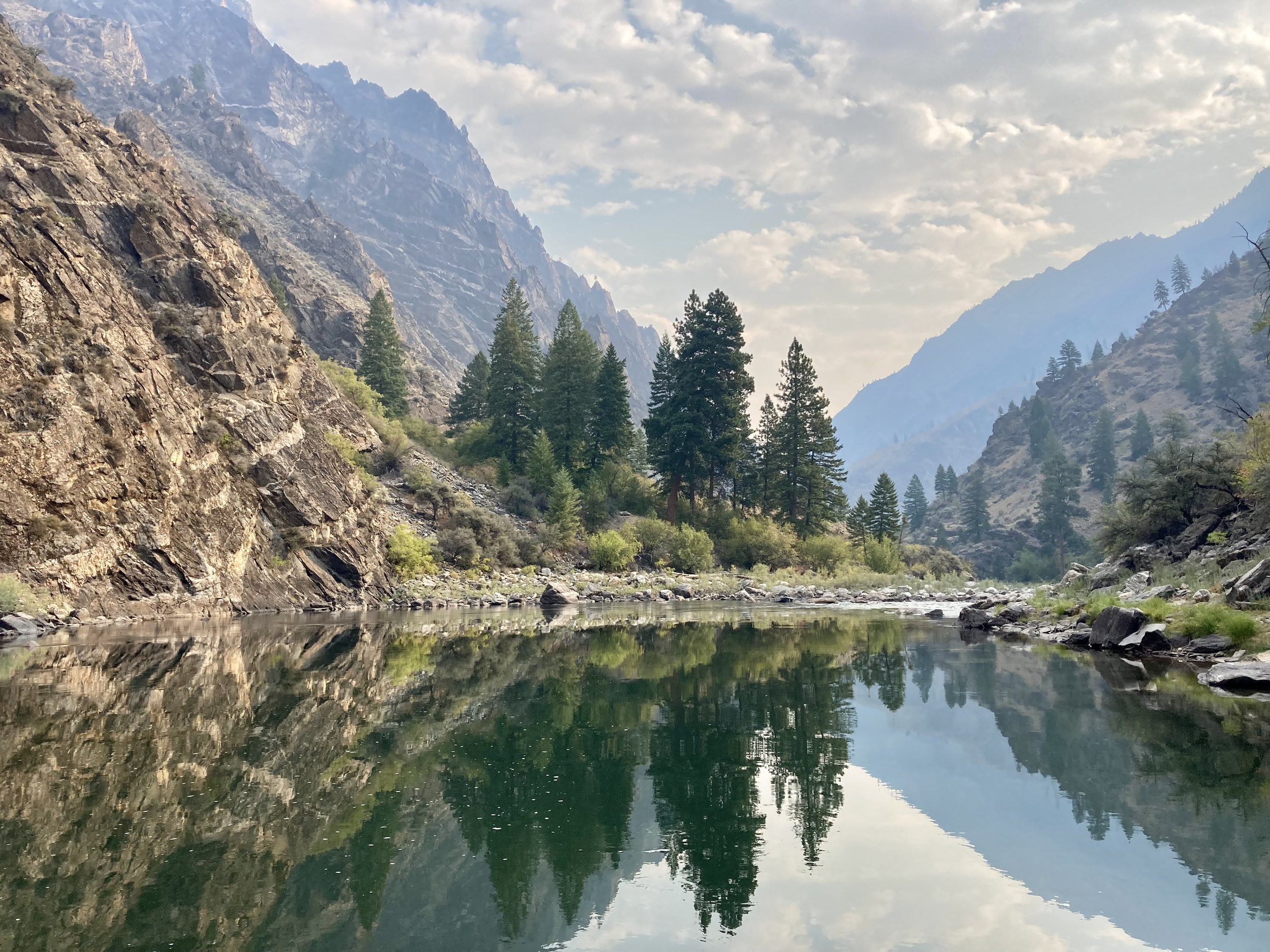Reflections on Idaho's "salmon sanctuary:" the Middle Fork of the Salmon River
Looking downstream in Impassable Canyon on the last morning of a Middle Fork of the Salmon River trip. Photo credit: Tess McEnroe, IRU staff
As I continue to learn how to “row a desk” after transitioning from full time river guiding to conservation work at Idaho Rivers United, I’m reminded what a privilege it is to return to my homewaters on the Middle Fork of the Salmon River to lead a river trip. It was not only a chance to unplug, but more importantly to take a step back and look at the bigger picture of why all of Idaho’s rivers need more protection. Getting out on the rivers we fight for is the best way to be reminded of why our work at Idaho Rivers United is so important and vital to the waterways we cherish.
As the saying goes, “If you love a place, you will protect it,” and I’ve always felt strongly that river guides are the first layer of stewards and advocates in the places they call home and choose to spend their time – on the river, in the canyons, connecting with the landscape and sharing the importance of the reciprocal relationships formed in the environment with those around them.
The Wild & Scenic Middle Fork of the Salmon River has over 10,000 people floating down its stunning 100 miles every year. This is an incredible opportunity to connect folks from all over the country to why this vein of a wild river system is so important to the bigger artery of freshwater pulsing throughout the world.
This trip was great in many ways – we had perfect weather and friendly flows launching at Boundary Creek at 2.47ft (the last trip before many outfitters start to deadhead and fly guests into Indian Creek at mile 25). Our group was mostly made of Sierra Club members, and it was an excellent chance to share the work we are doing together as partners to protect one of Idaho’s best remaining salmon sanctuaries.
Here are a few highlights that stood out:
Wild & free flowing characteristics
Seeing the changes in rapids in the top 15 miles from last year’s flash floods and landslides was amazing. Ramshead rapid is essentially underwater, with the river dammed up from major slides at Velvet Falls. The entrance to Velvet, sometimes called Spike Creek, seems faster and will become more challenging as the water levels drop and more bedrock is exposed. Giant piles of debris fans along the banks of the river, which cause new rapid formations, will continue to shift as loose materials move around in the coming years. Seeing these changes of a wild, free flowing river in action is special – and I believe the way all rivers should be allowed to thrive.
Water Temperatures & Fish Habitat
The Middle Fork’s water and overall ecosystem habitat is still pristine, and bounced back seemingly well after the major events which caused sediment and water quality changes to the system and fish habitat. The many new fallen, highwater trees, and log jams will provide more shade and coverage to fish habitat, which along with cold water, is a characteristic they need to survive while battling climate change and hotter temperatures downstream. The unique and outstanding Wild & Scenic values of this river system are a prime example of protections doing their job – this river is one of the best and long standing ‘salmon sanctuaries' in the lower 48 states. Fish biologists call it the crown jewel of salmon habitat, as almost all of the Middle Fork's Chinook are wild, which means they haven't bred with salmon released from hatcheries. The wild fish have high genetic diversity — a rarity in the Columbia River Basin. Simply put, we need solid numbers of these fish to continue to return to their spawning grounds after 900 miles of migration at 6,000 feet.
The future and how to take action
We realize that conservation action asks can be tiring and cause fatigue, and that we’ve asked you countless times to speak up for salmon. However, the current window of opportunity to remove the four Lower Snake River dams is still upon us. The Biden Administration will be taking public comments until August 31, and the July 3rd deadline that has passed was pressed to ensure those earlier comments were read before they are expected to release more information, and steps, for positive news in salmon recovery in the Northwest region.
In terms of the future, this reflection is a reminder that river trips, and getting into the backcountry, are a way we can be reset and reinvigorated to fight for the places species that we love. If we do speak up, we at least know we are doing the right thing and contributing to ensuring protections for future generations of both people and the 130 other species who depend on wild salmon. So get out there and romp with your people, howl at the moon, swim in the eddies, and enjoy the feeling of connection wild places give us all.



